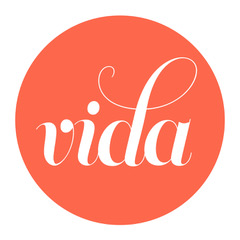We’ve got the freelance tax calculators and money tips to help you better plan for tax day all year long.

A majority of coworking space workers are self-employed or freelancers. And being self-employed comes with a long list of perks. Likely highest on that list for most is being your own boss and making your own schedule. I mean, that’s the dream, right?! Plus, you get to choose your coworkers/employees and have the power to outsource tasks.
You’re in control.
One of the drawbacks of freelancing or self-employment, however, is filing freelance taxes. When you work for yourself, income tax doesn’t come directly out of every paycheck. You have to claim your income and file your taxes on your own—a process that can be a bit daunting. But don’t worry, VIDA Coworking has tips and tricks to help make your tax life easier!
Here are the ins and outs of filing freelance taxes.
Freelance Tax Calculator You Should Use
The self-employment tax rate is currently 15.3%—the sum of Social Security and Medicare—and only applies to net earnings (profit), not gross income. While you can try to do the calculation on your own, it’s easier to let a freelance tax calculator do it for you.
For those interested in paying for bookkeeping services and tax estimation, QuickBooks Self-Employed is a great option. If you don’t want to pay for the services, here are three free freelance tax calculators you can use to estimate your self-employment taxes:
You can also estimate your taxes by filling out the estimated tax worksheet, an electronic document that requires information such as adjusted gross income, deductions and more.
4 Types of Freelance Tax Forms
- Form W-9
Independent contractors will be asked to fill out a Form W-9. The form requires basic information such as name, address and social security information. The company you’re contracting with will file the form.
- Form 1099-NEC
According to the Internal Revenue Service, a Form 1099-NEC is used “by payers to report payments made in the course of a trade or business to others for services.”
- Form 1040-ES
Self-employed individuals should use Form 1040-ES. Fill out the worksheet attached in the document to determine if you need to file quarterly or yearly taxes.
How to Pay Taxes as a Freelancer: A Step by Step Process
To pay estimated taxes as a freelancer, follow these seven steps:
- Research and Review Freelance Tax Laws and Regulations
- Keep Receipts, Statements and Other Financial Information Organized Daily
- Know Your Deductibles
- Set aside and save the 15.3% tax rate from every client/customer payment you receive. This way you’re ready when it’s time to pay your taxes to the government.
- Understand Your Business Structure (LLC, Sole Proprietors, S-Corp, C-Corp)
- Estimate Your Quarterly or Annual Taxes
- Fill out the Form
- File Your Taxes (Electronically or by Mail)
Tax on Freelance Work: Should You Hire a Professional?
Filing taxes for freelance income can be tricky. It’s a great idea to hire a tax professional who is familiar with freelance businesses. They’ll likely know the latest freelance tax bills, have updated information on state taxes and local taxes, and can help you organize your receipts, statements and general finances. Such experts can also help you determine if you need to pay quarterly taxes or file annual tax returns. Another benefit? If you hire a tax professional, they fill out and file your income tax return. You don’t have to do a single calculation. All you have to do is pay your taxes.
5 Freelancer Tax Deductions Available
Freelancers can deduct “ordinary and necessary” expenses for the operation of their business, including:
- Office Expenses
- Business-Related Food
- Business-Related Travel
- Equipment and Supplies Expenses
- Education and Certification Costs
If you’re a freelancer looking for shared office space, become a Member of VIDA Coworking in Portland, OR. Contact us today to schedule a tour!

